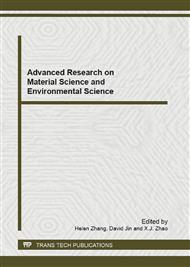p.205
p.209
p.217
p.221
p.225
p.230
p.235
p.239
p.244
Stickies Treatments of Recycled Fiber Pulping Wastewater by Lipases
Abstract:
Two types of lipases were employed to control the stickies troubles of recycled fiber pulping wastewater in this article. The conditions of enzymatic treatments were optimized and FTIR and GC-MS were used to characterize the changes between the initial and treated wastewater. The optimized conditions of Resinase(R) were: 20u/100mL, 50°C, pH 6.5 ,2h; and those of Lipase(S) were: 15u/100mL, 50°C, pH 9.0 and 2h. Results confirmed that under these optimal conditions of each lipase, both of the two lipases show the excellent performance in the treatment of the stickies of wastewater.
Info:
Periodical:
Pages:
225-229
Citation:
Online since:
June 2012
Authors:
Keywords:
Price:
Сopyright:
© 2012 Trans Tech Publications Ltd. All Rights Reserved
Share:
Citation:


